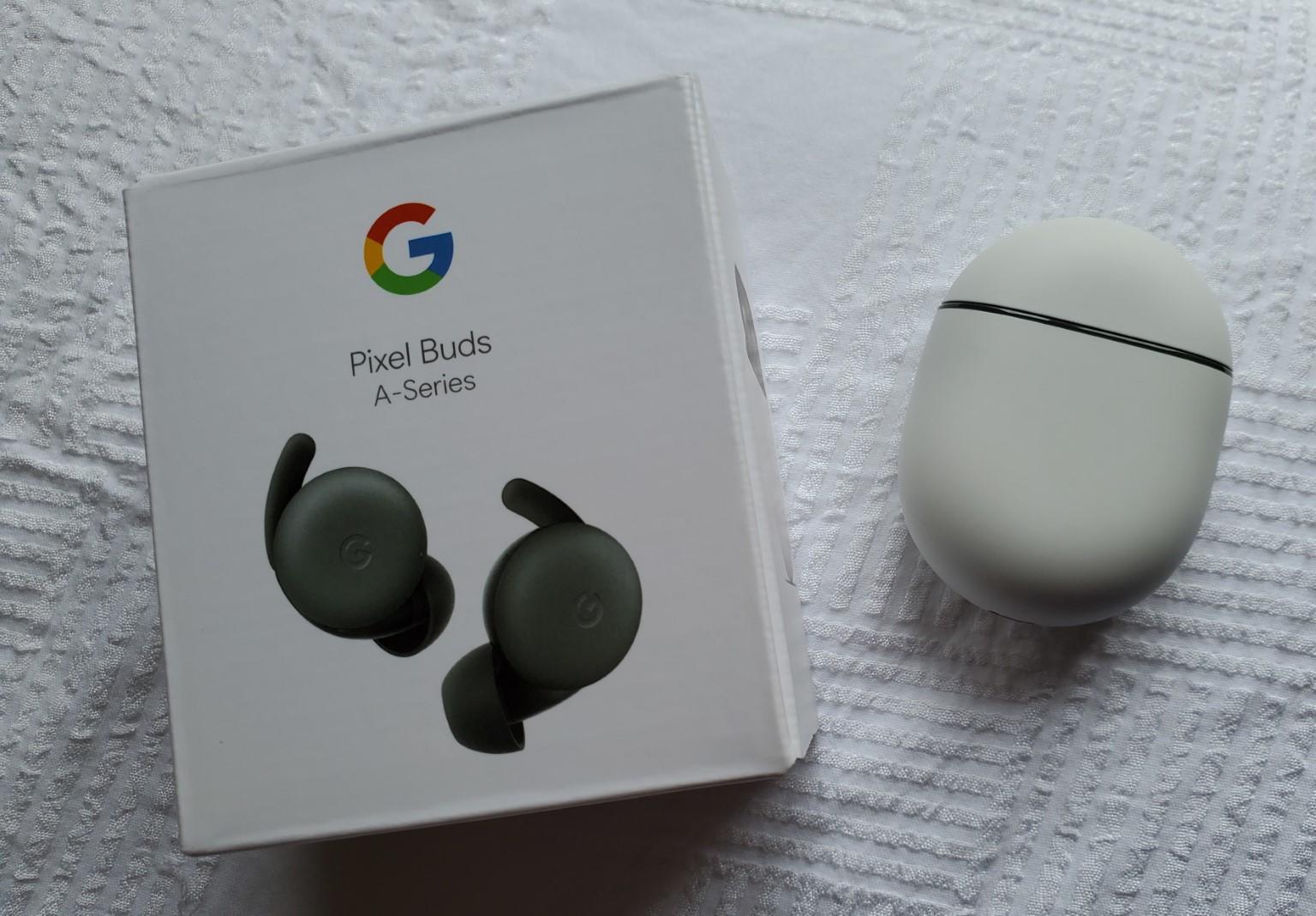'ZDNET Recommends': What exactly does it mean?
ZDNET's recommendations are based on many hours of testing, research, and comparison shopping. We gather data from the best available sources, including vendor and retailer listings as well as other relevant and independent reviews sites. And we pore over customer reviews to find out what matters to real people who already own and use the products and services we’re assessing.
When you click through from our site to a retailer and buy a product or service, we may earn affiliate commissions. This helps support our work, but does not affect what we cover or how, and it does not affect the price you pay. Neither ZDNET nor the author are compensated for these independent reviews. Indeed, we follow strict guidelines that ensure our editorial content is never influenced by advertisers.
ZDNET's editorial team writes on behalf of you, our reader. Our goal is to deliver the most accurate information and the most knowledgeable advice possible in order to help you make smarter buying decisions on tech gear and a wide array of products and services. Our editors thoroughly review and fact-check every article to ensure that our content meets the highest standards. If we have made an error or published misleading information, we will correct or clarify the article. If you see inaccuracies in our content, please report the mistake via this form.
Google Pixel Buds A-Series review: Affordable, secure, and optimized for Android


Google Pixel Buds A Series
pros and cons
- Outstanding secure fit
- Supports individual earbud use
- Full-featured Android support
- Matte finish carrying case
- Reliable, simple touch controls
- Reasonable price
- No ANC functionality
- Limited iOS capability
- Five hour battery life
- Editors' review
- Specs
They say that the third time is the charm, and when it comes to Google's wireless headset hardware -- they're right. The first Pixel Buds in 2017 were very disappointing, while the second generation in 2020 was much better, at first. Those 2020 Pixel Buds didn't live up to the first month's impressions, as further use revealed serious connection and reliability issues that also came with a high $180 launch price.
Featured
As soon as the new Google Pixel Buds A-Series became available online, I placed my order for a Dark Olive pair that proved to be a good time to use my $30 in credit earned from past Pixel and Google One purchases. I've been using the new Pixel Buds A-Series for a couple of weeks while traveling, working out, mowing the lawn, working in the office, commuting, and more. They have proven to be better than the 2020 Pixel Buds so far, and I hope they don't succumb to the same issues seen on the much more expensive earbuds from last year.
I'm blessed with the opportunity to test out a lot of mobile gear and it's clear that the $280 Sony WF-1000XM4 earbuds offer an amazing audio experience. However, $280 is a lot of money for earbuds, so it's nice to see Google launch an affordable option with the Google Pixel Buds A-Series. I personally find the fit to be more secure with the Pixel Buds A-Series and I love the sleek matte finish case.
See also: Best earbuds: Our top picks.
The new Google Pixel Buds A-Series earbuds are available for $99 in Clearly White and Dark Olive. I purchased the Dark Olive model, since I already have a non-working pair of white Pixel Buds I bought in 2020.
Specifications
- Microphones: Dual beamforming mics in each earbud
- Speakers: 12mm dynamic driver with passive noise reduction
- Sweat and water resistance: IPX4 rating
- Sensors: Capacitive touch on each earbud, accelerometer, gyroscope, dual IR proximity in-ear detection
- Battery life: Up to five hours of play with charging case providing another 19 hours of music playback. 15 minutes of charging provides up to three hours of listening time. Talk time is half of audio listening time.
- Wireless connectivity: Bluetooth 5.0
- Earbud weight: 5.1 grams each
- Charging case dimensions: 63 X 47 X 25mm and 42.5 grams (without earbuds)
Hardware
The retail package includes the two wireless Pixel Buds A-Series, a charging case with integrated battery, small and large silicone eartips, and a USB-A to USB-C cable. The medium size silicone eartips are attached to the Google Pixel Buds.
The charging case has a soft matte finish and looks a bit like a flat egg. There is a USB-C port on the bottom, an LED indicator light on the front, and a small pairing button on the lower back. Unlike the 2020 Pixel Buds charging case, this one does not support wireless charging, which is one of the trade-offs made this year to reduce the price. Given the speed of wireless charging and the decent battery life, this seems to be a reasonable trade to save money.
Top ZDNET Reviews
The lid of the carrying case has a positive spring, so when you lift it about 45 degrees it flips all the way open to the 90-degree position. Each Pixel Bud is secured in place with magnets, but is also easy to remove from the case when you grab them.
The colored portion of the Pixel Buds, assuming you purchase Dark Olive like I did, is the entire earbud and the internals of the charging case. Last year we only saw color highlights on some portions of the earbuds. Touch controls include:
- Single tap to play or pause when listening to music or to answer a call
- Double tap to skip to the next track or to end/reject a call
- Triple tap to play the previous track or to repeat a track
- Press and hold to launch Google Assistant or hear your notifications
There is a rubber piece embedded in the Pixel Bud that is curved and serves as a fin piece (called a "stabilizer arc") that helps keep the Pixel Bud securely embedded in your ear. There are two gold contacts to support charging the Pixel Bud. Above these contacts is one opening for the IR proximity sensor. Another IR sensor opening is down on the small arm towards the end of the earbud (the area known as the "retention curve"). The spatial vent for in-ear pressure reduction is also located down on the retention curve. The two mic openings are positioned on either side of the touchpad.
See also: Sony WF-1000XM4 earbuds review: Superb noise cancellation, clear calls, and long battery life.
The Pixel Buds A-Series have a glossy finish with plastic materials, while the outside touchpad has a matte finish. The silicone tips fit over this plastic end to help the Pixel Buds fit comfortably in your ear.
Once you insert the Pixel Buds A-Series into your ear, simply rotate each one into position until you are comfortable with it. It felt a bit like screwing the Pixel Bud deeper into my ear canal, but the result is one of the most secure earbuds I have ever tested. Sound around you is definitely blocked out by the deep mounting of the earbud, but after hours of wear I never felt any discomfort.
Google Pixel Buds A Series review: in pictures
Differences between 2020 Pixel Buds and Pixel Buds A-Series
If you look through all of the details in my two reviews, you may spot a few differences. To make it easy for readers who want to make a choice between the two earbuds, here is where they are different:
- Price: The 2020 Pixel Buds are $179 and the A-Series are priced at $99
- Wireless charging case: Only the 2020 Pixel Buds case supports wireless charging
- Touch controls: The 2020 Pixel Buds support swipes for volume control
- Water resistance: The 2020 Pixel Buds case is also water resistant
- Wind reduction: The 2020 Pixel Buds support this feature
- Sensors: One sensor was removed from each A-Series earbud so the never-used Attention Alerts only works on the 2020 Pixel Buds
If you are willing to make a few compromises, you can save $80 and purchase the new Pixel Buds A-Series. The compromises aren't essential for my daily usage, and the more reliable performance outweighs these compromises while also coming in at a much more affordable price.
Smartphone software
iOS users will only see the Pixel Buds A-Series appear in Bluetooth settings and have no advanced control or options available. But you can still use the Pixel Buds as a basic Bluetooth headset and even launch Google Assistant -- if you have the Google Assistant app installed on your iOS device and it is running.
The real magic here is present with Android phones. I tried the Pixel Buds on multiple Android phones to test out the experiences. The Pixel Buds app is embedded into Google Pixel phones, but other Android devices get nearly the same experience by simply downloading and installing the Pixel Buds app from the Play Store.
The Pixel Buds app includes battery status indicators for each earbud and the charging case, as well as the ability to find each earbud, view a visual list of the gesture touch controls, toggle the bass boost option, toggle adaptive sound, toggle in-ear detection, manage firmware updates, and view other settings of the Pixel Buds.
If you connect the Pixel Buds to a Pixel phone, then you will see additional toggles for HD audio, phone calls, media audio, and contact sharing.
See also: Best headphones: Workout and running.
Adaptive sound automatically optimizes the volume of the Pixel Buds A-Series based on your surroundings. I understand the changes are subtle and nothing like active noise cancellation. When you manually adjust the volume, adaptive sound is temporarily disabled. When you enter an environment with vastly different sound levels than where you departed, adaptive sound will kick in again.
Daily usage experiences and conclusion
We see battery life in high-end wireless earbuds from eight to twelve hours, so the five hours provided here in the Pixel Buds A-Series is not remarkable in 2021. That said, you can use each earbud individually for five hours, so in a single earbud swapping scheme you could get through a full day and more before having to connect a USB-C cable to charge up the earbuds.
The $99 price point is reasonable for headphones with all of these features and an optimized Google Assistant experience. If you are an iPhone user, then the experience is limited -- I do not recommend the Pixel Buds A-Series for iPhone users. An Android phone is needed to fully access the features of the Pixel Buds and is also necessary to update the earbuds. Updating them is essential, since Google tweaks and improves the experience over time.
The Pixel Buds A-Series earbuds and charging case both have the same design as the 2020 Pixel Buds, and that is a great thing. The earbuds have one of the most secure fits of any earbuds I have tested, and running with them has been a fabulous experience. The Pixel Buds A-Series passed my lawnmower test and while they don't have ANC, I was still able to enjoy music flawlessly with a loud lawnmower and gas blower in my hands. It was also great to listen to podcasts with one earbud in while driving five hours in the southern part of the US.
Given that I had some Google credit to use, it's easy to justify the Pixel Buds A-Series at $70. Given the poor performance from the 2020 Pixel Buds, I would never recommend them over these more affordable earbuds. At $99 the Pixel Buds A-Series are a compelling option for Android smartphone users. If you are an iPhone user, then look to earbuds from Apple, Jabra, or others.